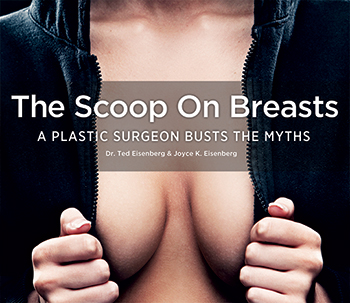The Breast Augmentation Patient Cluster Phenomenon
Redheads come in clusters, according to Austrian biologist Paul Kammerer, who studied coincidences when he wasn’t studying salamanders. In the early 1900s, he spent hours on the streets of Vienna recording the height, hair color and type of hat worn by passersby. He observed that men with red hair tended to pass by in clusters – often in threes – proof of his “law of series.”
The Redhead Cluster Phenomenon makes sense to me because over the last 10 years, I’ve made a similar observation, which I call the “Breast Augmentation Patient Cluster Phenomenon”!
When I review the charts in the operating room before I begin surgery, I notice similarities: “Everyone’s very tall today, ” or “Everyone has a tattoo or piercing,” or “All of the patients are named Jamie – and so is one of the nurses!”
Is it a cosmic biorhythm or an unexplainable phenomenon? What are the odds?
According to the “law of truly large numbers,’ credited to mathematicians Persi Diaconis and Frederick Mosteller, “with a large enough sample, any outrageous thing is likely to happen.” I’ve performed a truly large number of breast augmentations and breast lifts – more than 7,000 – so perhaps I have a large enough sample.
 I don’t know if these patient groupings are statistically inevitable or proof of Kammerer’s law, but I do know that my staff does not arrange the surgical schedule this way. Women choose their surgery date according to their convenience; we don’t choose it for them.
I don’t know if these patient groupings are statistically inevitable or proof of Kammerer’s law, but I do know that my staff does not arrange the surgical schedule this way. Women choose their surgery date according to their convenience; we don’t choose it for them.
Some of the coincidences can be related to the seasons. We see large numbers of teachers and students who have the same school breaks. But most groupings are not seasonally related.
Even though my patients range in age from 18 to 67, on some days everyone is in their early 20s; on another day they’re in their 30s, on another in their 50s.
One day everybody might have children; on another day nobody has kids. One day all the women live close to my Philadelphia office, while on another day everyone comes from out of town. Some days all the women come in to the hospital with a bunch of family members; other days they are just dropped off.
I’ve also had days where all the patients were Hispanic, and others where they were all Asian, Italian, Indian or Russian.
I’ve had days where everybody was a nurse and others where all were a stay-at-home mom. And yes, I do have groupings of redheads, brunettes and blondes.
Sometimes, the women’s choice of breast implant size is the common denominator: Everyone seems to be choosing bigger implants one day, while others are “smaller size day” and “average size day.” This might correlate with the stature of the patients, which is another common denominator. They might all be tall and have big frames or all may be more petite.
I’ve also had days where all the patients were perkier and other days where all were droopier. And even though breasts are sisters, not twins, some days all the women are fairly symmetrical and on another day they are more noticeably uneven and are getting breast implants of different sizes. [WATCH OUR VIDEO: Correcting Breast Asymmetry: They’re Sisters, Not Twins]
Do other people notice this phenomenon? Does this phenomenon occur in other settings? Does a hairstylist notice that one day all her clients are redheads and on another day everyone says, “Just cut it a little bit”? At Dunkin’ Donuts, is one day all about glazed jelly donuts? Do the chocolate frosted donuts sell out on another day?
Maybe I’m observing these similarities because I’m solely performing cosmetic breast surgery, and that’s making the coincidences more statistically possible. But on a recent surgery day, when I was chatting with the OR staff and I asked them their favorite ice cream flavor, they all said mint chocolate chip.
There might just be something to cluster phenomena after all!




 CLICK HERE TO BUY
CLICK HERE TO BUY







